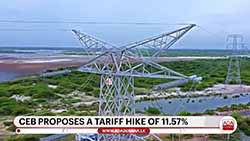NASA chief: Time to clean up all that space junk
November 15, 2015 01:47 pm
NASA Administrator Charles Bolden warns that too little is being done to remove debris from space, an issue that has drawn plenty of attention this week after an unknown object made a fiery entry into Earth’s atmosphere.
Speaking Thursday at the Council on Foreign Relations, Bolden said more countries need to step up to the plate and put funding into efforts to clean up space – which is crowded with all sorts of objects, from nonfunctional spacecraft, abandoned launch vehicle stages, mission-related debris and fragmentation debris – all traveling at 17,500 mph.
They had predicted a splashdown in the Indian Ocean about 62 miles off the coast of Sri Lanka. But it was unclear if the object actually landed.
“Not a lot of countries are putting money into debris removal development, and more of us need to,” he said.
“We are among those that’s not putting a lot of money into debris removal,” he said. “We work a lot on what we call debris mitigation, making rules that say when you put something in space it has to have enough fuel to, when its mission is over, you can either put it into a parking orbit where it won’t come back for a hundred years, or you can safely de-orbit it into the ocean. But that’s not the answer. The answer’s going to be debris removal, and we’ve got to figure out how to do that.”
Within the U.S. Department of Defense, the Joint Functional Component Command for Space (JFCC-Space) currently tracks 23,000 objects in low-Earth orbit. NASA officials have estimated that roughly 500,000 pieces of space junk larger than a marble circle the planet, and there could be more than 100 million tiny fragments, some as small as flecks of paint.
On rare occasions, the space junk enters Earth’s atmosphere as the object known as WT1190F did early on Friday. Experts had forecast that the unknown object – which could be a spent rocket stage, a paneling shed from a recent moon mission, or even a piece of debris dating back to the Apollo missions - would enter Earth’s atmosphere at about 1:20 a.m. ET. (Fox News)












